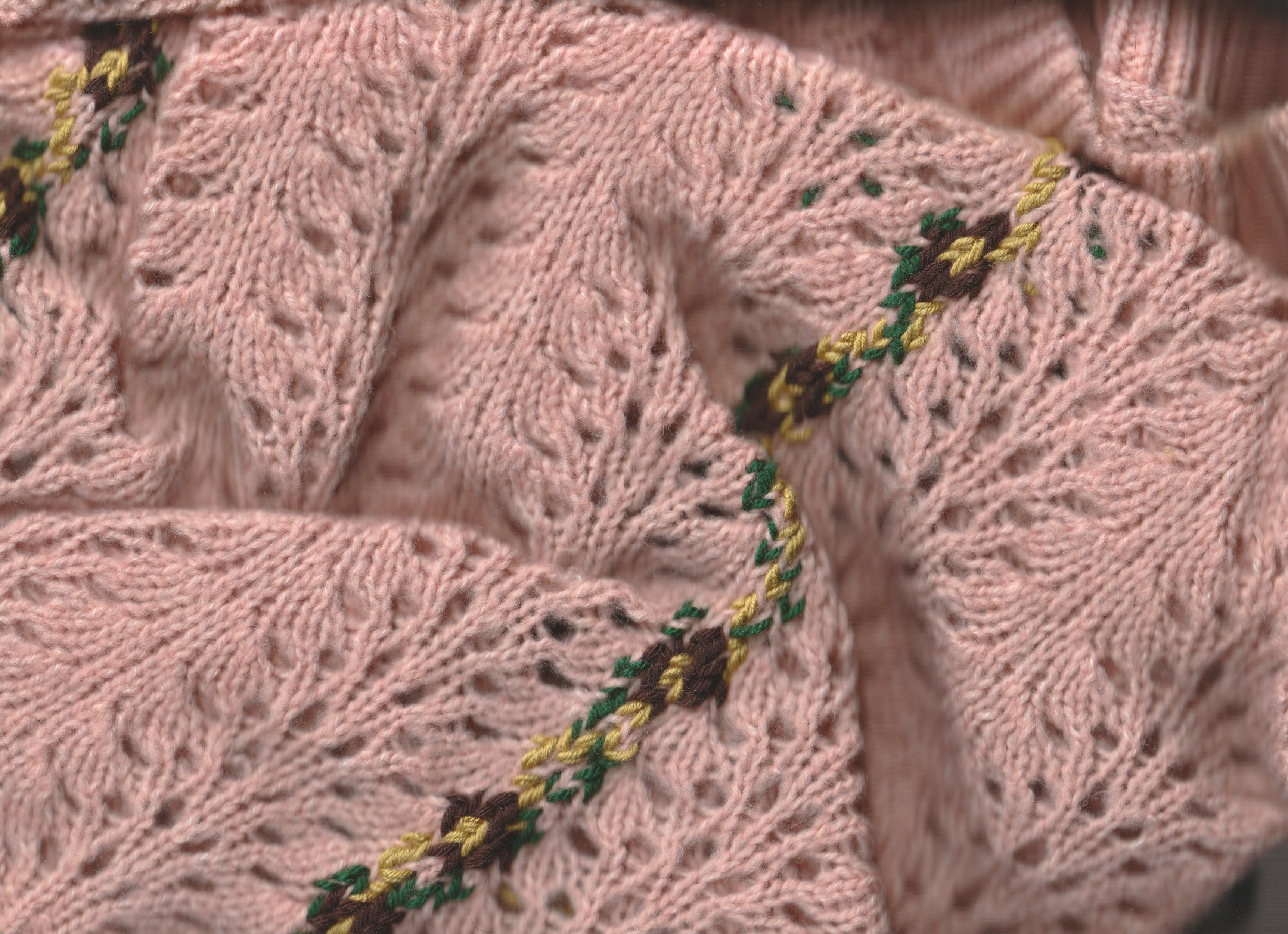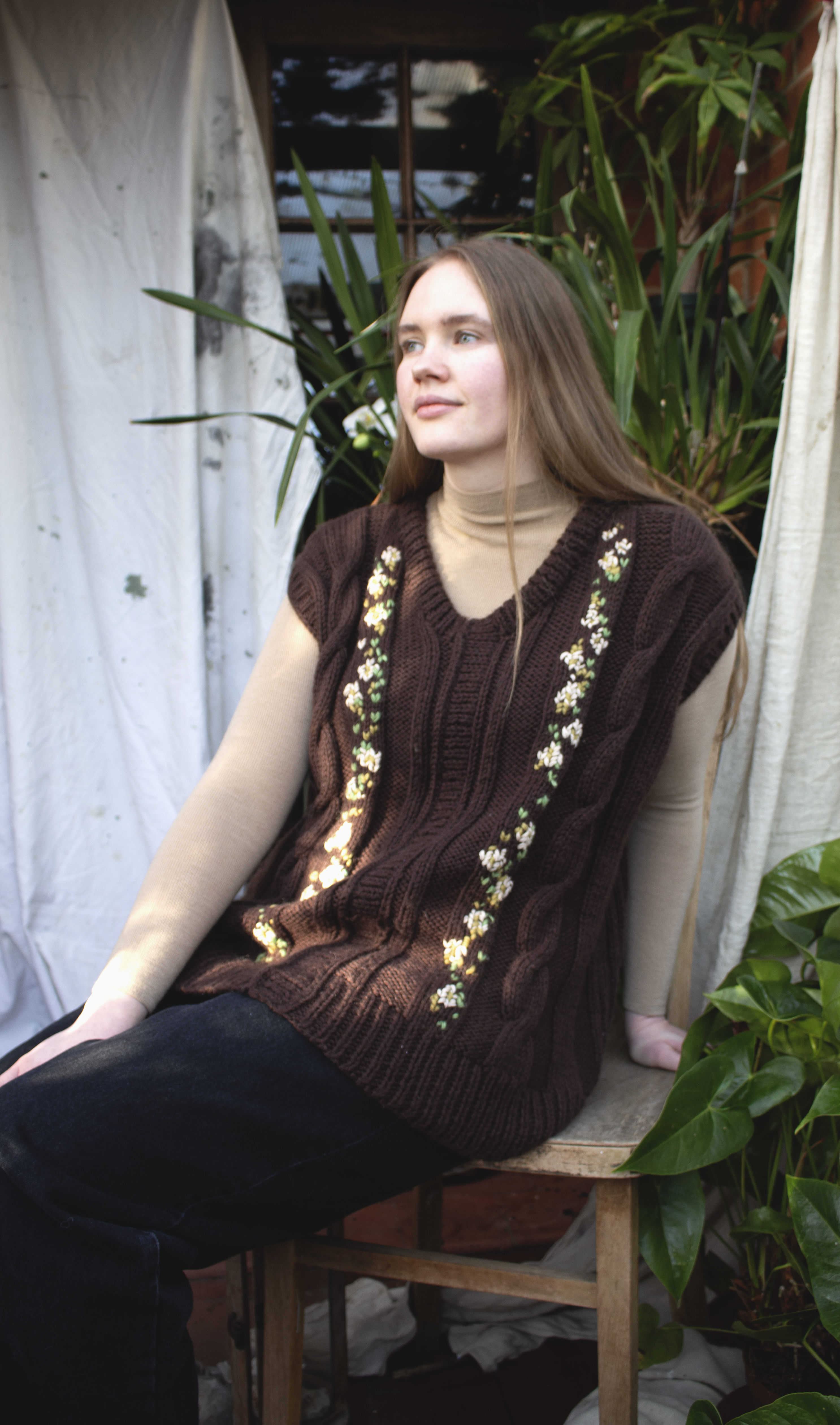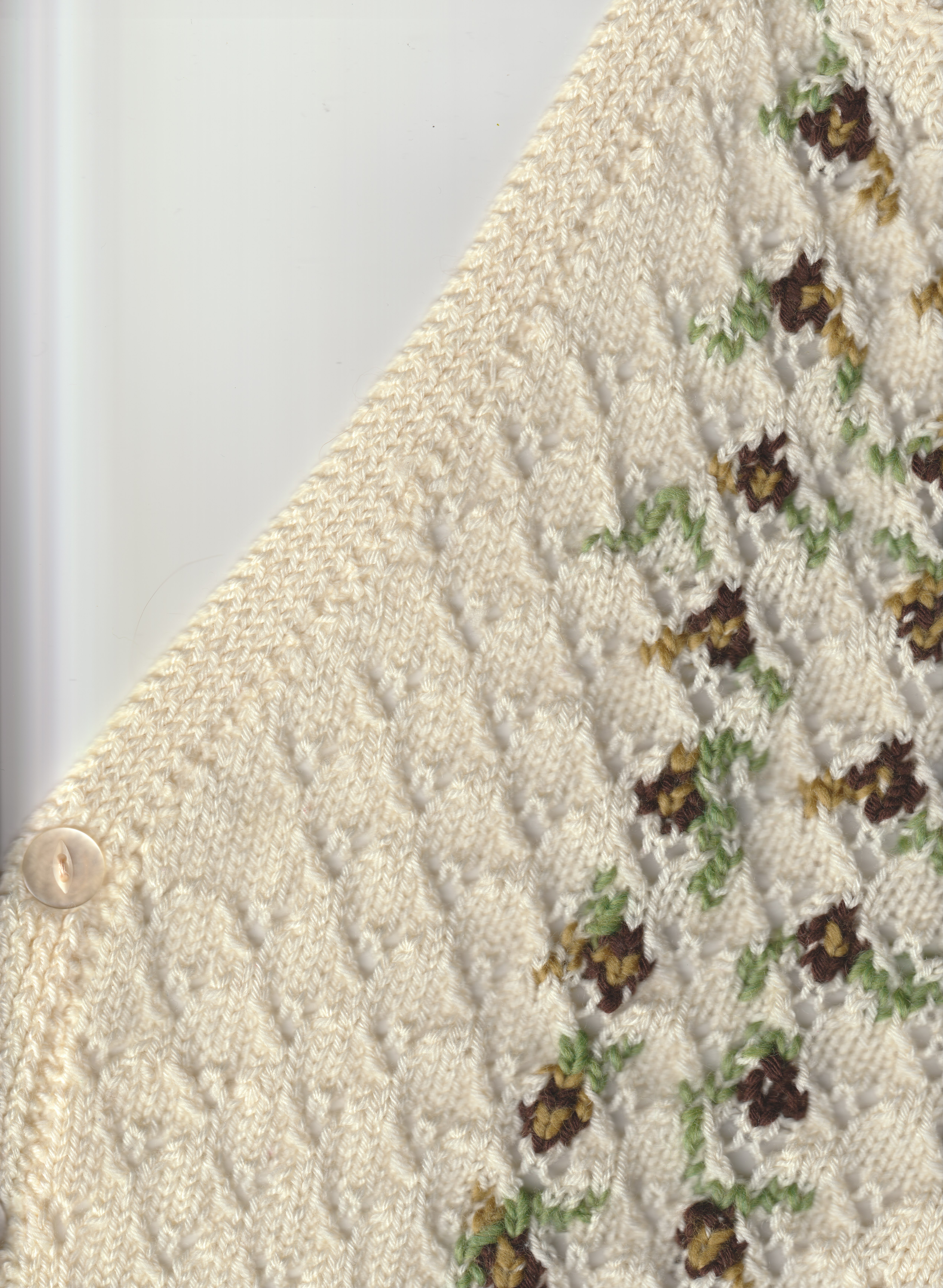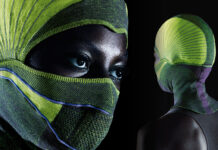Back in August KIC interviewed knitwear design graduate Amy Goacher. Having faced the challenges of designing her graduate collection remotely during the pandemic, Amy was about to embark on her design journey as part of Pitti Imagine’s ‘Feel the Yarn’ contest.
Since the interview, Amy has been developing her freelance design portfolio, as well as launching her own brand. In February Amy launched her first collection consisting of 8 hand crafted pieces. Jumpers, vests and cardigans were showcased, each tackling the growing issue of waste within the fashion industry through their utilisation of materials destined for landfill. Amy’s carefully considered design ethos originated in her craft focussed graduate collection and clearly shines through in her debut collection.

Signature floral embroideries and patchworking bring garments headed for landfill ‘back to life’ with a fresh, contemporary yet cosy look. Hand knit, crochet and embroidery combine to construct these hand crafted, rejuvenated knitwear pieces. Not only do these pieces contain the craftsmanship of the original maker, but they become entwined and layered with the creativity and craftsmanship of Amy. This narrative is multifaceted and imbues a preciousness into these garments, encouraging life-long care for these statement pieces.
Explaining the inspiration behind her first collection, Amy shared: “It all led on from my graduate collection which I worked on during the first lockdown in 2020. Everything shut down at university, so I had no access to workshops and limited resources at home. I decided to turn to what I had to hand and started to work into and re-develop existing garments.”
“A concept stemmed from this and I’ve found myself resorting back to the process of re-development / upcycling, I find the process of taking something that is unwanted and turning it into something desirable rewarding. Ultimately keeping the original garment out of landfill!”

The creative process
Amy’s eye for knitwear allows her to select pieces for transformation wisely. Fully fashioned garments are her favourite because these can unravel easily and thus keep waste to an absolute minimum. Any unravelled yarn is archived and repurposed into new knitwear or embroidery yarn for Amy’s signature floral motifs.
It is the traditional aspect of Fair Isle patterns which draws Amy to this particular niche of knitwear, imagining how she can add something to the garment that breaks from the pattern in an unexpected way:
“An embroidery motif over the top of the Fair Isle or a bright colour against a more neutral base works well. Each garment in my new collection was originally a second hand or vintage garment that I have worked into and re-developed into a piece that is truly unique and sustainable. Designed with minimal waste and made to last, so each piece can be treasured and passed down through generations.”
Whilst colour is of course important for Amy, it is crucial to her process that her colour palettes never become too restrictive. The narrative she builds is organic and fluid, allowing her to utilise whatever she may find and adapt to make use of materials that may otherwise go to waste. What one person may see as an old piece of knitwear, Amy sees as a valuable resource ready to problem solve with. This adaptable approach allows sustainable decision making and problem solving to over-ride aesthetic restrictions.

“It takes alteration, unravelling, and re-knitting (and patience!) to get the garments to a more contemporary fit.”
Noting the peculiar proportions of some of the knits she saves from landfill, Amy relishes the challenge of re-fitting ‘odd’ garments and making amendments to the silhouettes in order to achieve her desired shapes.
With her amendments to knitwear spanning both aesthetic and structural alterations, Amy is able transform even the most unlikely, ‘down-trodden’ pre-existing garments into precious, desirable and stylish pieces.
Values within and approaches to sustainable design


With sustainable, slow practices at the core of Amy’s design ethos, her commitment to reimagining waste and rediscovering the beauty in pre-existing pieces is inspiring. Amy’s drive to work this way stems from an inherent belief that there is already too much ‘stuff’ out there, and designers must work to address this waste issue,
“There is so much stuff out there already! I’ve heard that we supposedly have enough clothing on the planet to clothe 6 generations, it’s no secret that the fashion industry, particularly fast fashion, is bad news for the environment and climate change. Keeping all of that in mind, it is more important than ever before to design sustainably and ethically – it can sometimes feel like you’re spinning plates, but I find it a motivator to help me think of more sustainable solutions.”
Building this knowledge initially during the problem solving of her graduate collection, Amy perseveres within this space, pushing the boundaries of what she can achieve through honing her skills to refine her creative handwriting.
Feel the Yarn
Back in August, Amy was looking forward to embarking on her project for the ‘Feel the Yarn’ contest, for which she was a finalist. Amy was paired with spinner Olimpias Group and after swiftly receiving colour cards and seasonal overviews, she was able to make her yarn selections and get on with designing and making.
Amy’s look using Olimpias yarns took inspiration from traditional knitting techniques and garments, such as Fair Isle patterns and Ganseys. In the brief from ‘Feel the Yarn’ there was a focus on sustainability, which drove Amy’s focus towards natural fibres- predominantly wool with additions of cotton.

The outcome stayed true to Amy’s style, whilst pushing her skills working with new material palettes and industry standard yarns.
There had been fears the competition may not go ahead due to the first lockdown, but fortunately ‘Feel the Yarn’ organisers adapted quickly with the utilisation of a digital platform on Facebook. This meant all the contestants could showcase their outcomes, and this industry recognised opportunity for graduates was therefore still able to go ahead.

What’s next?
“Watch this space…”
Amy’s ambitions are now focussed on the development of her second collection, available to shop online soon – this time exploring woven fabrics too. With a belief that the issue of waste is set to become an even stronger focus within the fashion industry, Amy is poised to make a real impact.
The textile and fashion industry can be a tough nut to crack at the best of times when looking for work, but the result of the global pandemic has meant opportunities for Amy and her fellow graduates are even more limited than before. It is unique approaches and inherent value systems such as Amy’s which make her a valuable asset for any design team.
Encouraged by the feedback from her debut collection, Amy is excited to continue to offer sustainable solutions within knitwear, and build her ethos focussed portfolio even more.


Subscribe To Our Newsletter
Join our mailing list to receive the latest news and updates from our team.






